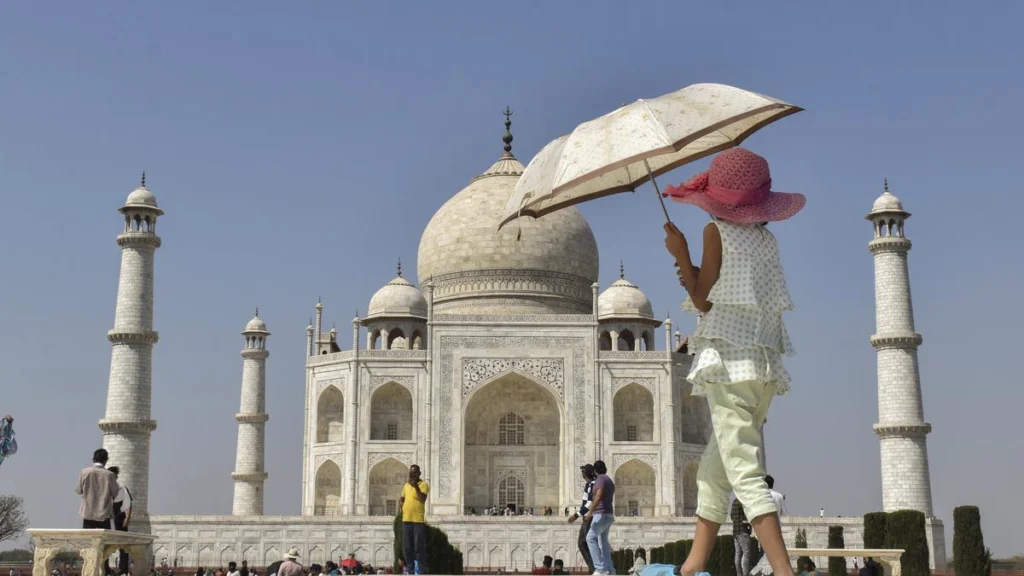Assess glass industry impact on Taj Mahal: Supreme Court to NEERI

Supreme Court Asks NEERI to Assess Pollution from Glass Units Near Taj Mahal
The Supreme Court of India on Tuesday, April 22, 2025, took decisive action to safeguard the Taj Mahal, directing the National Environmental Engineering Research Institute (NEERI) to assess the impact of nearby glass industries on the monument’s environment. The Court also instructed all government bodies — including the Uttar Pradesh Pollution Control Board (UPPCB) — to fully support NEERI during this investigation.
This move underscores the apex court’s long-standing commitment to preserving India’s iconic heritage, especially in the face of increasing pollution and urban pressure.
The Need for Urgent Attention
The Taj Mahal, located in Agra, has shown visible signs of environmental degradation over the years. Pollution has affected its white marble, leading to yellowing, black patches, and even surface erosion in some areas. While traffic and construction contribute to air pollution in the city, experts have increasingly pointed to industrial emissions — especially from nearby glass manufacturing hubs in Firozabad and Agra — as major sources of concern.
The Court expressed concern that these factories might be affecting air quality around the Taj, which falls within the Taj Trapezium Zone (TTZ) — a specially designated area established to protect the monument from industrial harm.
NEERI’s Role and Responsibilities
The Supreme Court has placed full responsibility on NEERI to carry out an independent, science-based environmental impact study. The organization will now examine:
- Emissions from glass factories
- The concentration of air pollutants such as SO₂, NOₓ, and particulate matter
- How air currents transport pollutants toward the Taj Mahal
- Suggestions for sustainable industrial practices and corrective action
The Court emphasized that NEERI should face no bureaucratic obstacles and must have access to all industrial data, factory premises, and emission control systems.
Supreme Court’s History of Environmental Oversight
This directive is not the Court’s first step to protect the Taj Mahal. In the 1990s, the Court intervened through the famous MC Mehta case, which led to the relocation or shutdown of several polluting industries. It also ordered factories to switch to cleaner fuels and created stricter environmental norms within the TTZ.
Despite those early victories, pollution remains a threat. While regulatory agencies have improved air quality monitoring, enforcement still falls short in many industrial areas. The Court’s new order sends a message that protection of national heritage must remain a priority.
Glass Industry Under the Microscope
Glass factories in Firozabad and surrounding areas operate year-round and often use coal and furnace oil — fuels known for their high emissions. Although many claim to follow pollution norms, environmentalists and locals frequently report air quality deterioration, especially during peak production periods.
Earlier studies showed that wind patterns sometimes push polluted air toward Agra, particularly in winter months. These patterns have likely contributed to ongoing damage to the monument, prompting the Court to take this latest step.
All Agencies Must Cooperate
During the hearing, the Court made it clear that state and central government bodies must assist NEERI without delay. It named departments such as the UPPCB, the Agra Development Authority, and the Ministry of Environment, Forest and Climate Change (MoEFCC) as key stakeholders.
“This is not just an environmental issue — it concerns the future of one of the world’s greatest heritage sites,” the bench observed. “We expect all departments to act with urgency and sincerity.”
Experts and Environmentalists React
Environmentalists have welcomed the Court’s decision. “Finally, we may get scientific clarity on what’s really damaging the Taj,” said Dr. Ritu Verma, an Agra-based environmental researcher. “We’ve been asking for detailed studies on industrial emissions for years. NEERI is the right agency to do this.”
However, activists warn that assessments alone won’t protect the monument. “We need policy action — shutting down or regulating polluting units, enforcing stricter emissions norms, and maybe even considering relocation,” said Anil Thakur, a campaigner with a Delhi-based environmental NGO.
What Happens Next?
NEERI is expected to begin its field study soon and must submit a preliminary report within three months. The report will guide the Court in deciding whether additional restrictions or relocations are necessary.
The bench also noted that it would review the implementation of NEERI’s recommendations and wouldn’t hesitate to summon officials who fail to comply.
Moving Beyond Legal Orders
While the Court’s order represents a strong step forward, experts believe India needs a comprehensive, long-term conservation strategy for the Taj Mahal. This would involve not just pollution control but also traffic management, tourism regulation, and local development planning to reduce urban stress on the area.
Some are calling for the use of advanced air filtration systems, smart city planning, and more green zones within the TTZ. These could complement legal efforts and protect the Taj for generations to come.
Conclusion: Reaffirming a National Commitment
The Supreme Court’s directive to NEERI shows a renewed national commitment to protecting the Taj Mahal from industrial pollution. While court orders set the stage, success will depend on cooperation, transparency, and quick execution.
India’s most iconic symbol of love deserves not just admiration but active care — and this time, the Court has made it clear that every stakeholder must do their part.






